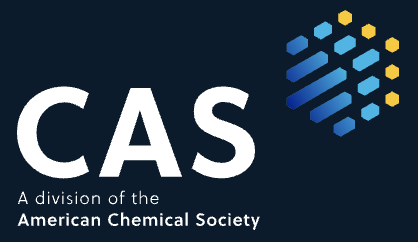Quick Search
Volume: 17 Issue: 2 - 2025
| 1. | Front Matter Pages I - IV |
| RESEARCH ARTICLE | |
| 2. | Evaluation of Tracheobronchial Compressions due to Cardiovascular Diseases Cansu Yılmaz Yeğit, Halise Zeynep Genç, Serap Baş, Mehmet Yazıcı, Eymen Recep, Erkut Öztürk, Alican Hatemi doi: 10.14744/cm.2024.55706 Pages 81 - 87 INTRODUCTION: Cardiovascular system-associated tracheobronchial compressions are often unrecognized complications of congenital cardiac anomalies, which may complicate the management of the disease. Enlarged or malpositioned cardiovascular anatomy or vascular rings can cause airway compression. METHODS: The study included patients who were followed up with a diagnosis of cardiovascular system-associated tracheobronchial compression during a two-year period at a tertiary center. Clinical data and short-term outcomes were retrospectively evaluated. RESULTS: The study included 22 patients with a median age of 24 months (IQR 11–29 months); 68.2% (n=15) were male. The median age at diagnosis was 15 days (IQR 0–18 months). Recurrent wheezing (59.1%) and dyspnea (59.1%) were the most common symptoms. There were 10 patients (45.5%) in the vascular ring/pulmonary sling group, while 12 patients (54.5%) were in the abnormally enlarged or malpositioned cardiovascular structure due to the underlying congenital heart disease group. The trachea was the most frequently compressed airway structure, with a frequency of 68.2%, while the left main bronchus followed with a frequency of 40.9%. The median age at surgical intervention was 5.5 months (IQR 2.25–9 months), while only two patients were managed conservatively. The overall mortality rate was 4.5% during follow-up. DISCUSSION AND CONCLUSION: A high index of suspicion and early diagnosis are essential for the optimal management of patients with cardiovascular system-associated airway compressions. Long-term studies are needed in this area to standardize diagnostic and therapeutic management. |
| 3. | Donor Management: Is It Always Possible to Achieve Goals to Prevent Organ Dysfunction? Pınar Küçükdemirci Kaya, Ayşegül Keten, Remzi Işçimen doi: 10.14744/cm.2025.69772 Pages 88 - 94 INTRODUCTION: Ensuring the hemodynamic stability of patients following catastrophic brain injury is a very challenging process. The organ transplantation rate increased significantly with donor management (DM) provided in accordance with the goals set for DM-goals (DMGs). However, the factors affecting the achievement of these goals are unclear. METHODS: We included adult patients diagnosed with brain death (BD), also who was subsequently given at least 24 hours of donor care between January 1st, 2011 and August 1st, 2023 in the study. The DMG scores of each patient were calculated at the time of BD-detection, twenty-four hours before, 2, 6, 12, and 24 hours after the brain-death-detection-time. RESULTS: Among 194 BD patients, 78 patients who received 24-hour donor care were included in the study. The DMG scores of patients with trauma were statistically higher than those of patients who had other reasons for BD (95% CI: [1.4–17]; p: 0.014). The results showed a significant decrease at 24 hours after detection, while there was no change at 6 and 12 hours after BD-detection in DMG scores (p<0.001). Also, the results showed that while the higher mean arterial pressure (MAP) recorded at 6,12 and 24 hours after BD-detection during DM increased the rate of liver and kidney transplantation (95% CI, 16.3–34.8]; p<0.001, [95% CI, 9.3–28.8]; p<0.001, respectively). Moreover, the most common problems encountered before BD-detection were diabetes-insipidus (30%) and fever (23%). DISCUSSION AND CONCLUSION: Although more studies are needed to provide more effective DM and increase transplantation rates, more comprehensive criteria, including organ perfusion parameters, should be determined, and the MAP target should be increased without hesitation in the use of vasopressor drugs. |
| 4. | Comparison of Maternal and Fetal Outcomes of Operative Vaginal Deliveries Using Vacuum and Forceps in a Tertiary Hospital Ali Buhur, Necdet Öncü doi: 10.14744/cm.2025.55707 Pages 95 - 100 INTRODUCTION: There is limited knowledge regarding operative vaginal delivery. This study aimed to assess the indications, complications, and maternal and neo-natal outcomes of operative vaginal delivery utilizing forceps and vacuum extraction at a tertiary hospital. METHODS: This retrospective analysis included a total of 117 individuals who had undergone operative vaginal delivery at University of Health Sciences Istanbul Kanuni Sultan Süleyman Training and Research Hospital between January 1, 2016, and December 31, 2022. The participants were classified into forceps and vacuum extraction groups. Maternal and neonatal outcomes related to demographic characteristics (mean age, parity, BMI) postpartum hemorrhage, perineal lacerations, cervical tears, anal sphincter damage, length of stay, the necessity for neonatal intensive care, the incidence of infant jaundice, cephalohematomas, brachial plexus injuries, and Apgar scores were analyzed. RESULTS: The study included 117 patients, 35 of whom had forceps deliveries and 82 vacuum deliveries. The rate of operative vaginal delivery was 0.35%. Apgar scores at both the first and fifth minute were significantly lower in the forceps group p=0.001 The necessity for newborn intensive care, and the occurrence of brachial plexus injury were significantly higher in the forceps group p=0.001 The occurrence of cervical tears was higher in the vacuum group p=0.001. DISCUSSION AND CONCLUSION: Our study has displayed the superiority of vacuum over forceps. In carefully selected circumstances, vacuums are associated with relatively low rates of serious morbidity and mortality in both mother and baby compared to forceps. |
| 5. | Prevalence of High-riding Vertebral Artery in Chiari Malformation Type-1 Eylem Burcu Kahraman Özlü, Ali Erhan Kayalar, Arif Tarkan Çalışaneller doi: 10.14744/cm.2025.30592 Pages 101 - 106 INTRODUCTION: The aim of this study is to analyze the patients operated on for Chiari malformation type 1 for the presence of a high-riding vertebral artery (HRVA) and to investigate the effect of this parameter on surgery. METHODS: Patients who underwent surgery for Chiari malformation type 1 between 2018 and 2020 in our clinic were retrospectively evaluated with patient files and preoperative cervical spine computed tomography (CT) imaging. A total of 15 patients were included in the study. Lateral mass internal height and isthmus height measurements were performed to investigate the presence of HRVA. RESULTS: One (3.3%) of 30 C2 lateral mass internal height measurements showed a high-riding vertebral artery on the right side. A high-riding vertebral artery was found in 13 of 30 C2 isthmus height measurements (43.3%). Of these, 3 were right-sided, 2 were left-sided, and 4 were bilateral. A total of 9 patients had unilateral or bilateral HRVA. None of these patients experienced any surgical morbidity related to HRVA. DISCUSSION AND CONCLUSION: Although HRVA was detected at a relatively high rate in CM-1 patients in our series, it did not affect the surgical outcome. We conclude that investigating the presence of HRVA in the preoperative planning of CM-1 patients could be helpful in avoiding possible complications. |
| 6. | Comparison of Placental Strain Elastography Values Between Healthy Pregnant Women and Pregnant Women with Intrauterine Growth Restriction or Preeclampsia Ekrem Ergenç, Mehmet Sait Menzilcioğlu, Türkhun Çetin, Elif Köse doi: 10.14744/cm.2025.84429 Pages 107 - 114 INTRODUCTION: We aimed to determine strain elastography values in the placentas of healthy pregnant women and pregnant women with intrauterine growth restriction (IUGR) and preeclampsia (PE). To obtain more objective data, we also examined whether strain ratio values change with placental maturation at different gestational weeks. METHODS: In our prospective randomized study, 64 pregnant women were divided into groups according to the degree of placental maturation (placenta grades 1, 2, and 3) and the trimester they were in to determine strain elastography values. Strain rates of the target tissue (placenta) and subcuta-neous adipose tissue were calculated. RESULTS: According to our study, there was no statistically significant difference between the degree of placental maturation and strain ratio values. Additionally, no significant difference was detected in the strain ratio values of healthy pregnant women in the second and third trimesters. However, in cases with preeclampsia and intrauterine growth restriction, strain ratio values were found to be statistically significantly higher, especially in pregnant women in the second and third trimesters. We found a moderate correlation between strain ratio values and uterine artery S/D. Additionally, we observed a moderate positive correlation between strain ratio and BMI. DISCUSSION AND CONCLUSION: Our findings indicate that placental elastography strain ratio values may increase in pregnant women with preeclampsia and IUGR. These results support previous studies. Furthermore, our study shows that placental elastography strain rate values are not affected by gestational age or placental maturation (second and third trimesters) in healthy pregnant women. Our study was conducted in a reference hospital with a limited number of patients and restricted ultrasound imaging facilities. Future research with a larger sample size and advanced imaging techniques is recommended to support these findings. |
| 7. | Comparison of Transabdominal Preperitoneal (TAPP) and Total Extraperitoneal (TEP) Methods in Adult Inguinal Hernia Repair at a Secondary-Level State Hospital: A Retrospective Cohort Study Nurettin Şahin, Ufuk Mete Yıldız doi: 10.14744/cm.2025.88700 Pages 115 - 123 INTRODUCTION: Inguinal hernia repair is the most common procedure performed by general surgeons. According to the European Hernia Society (EHS) guidelines, the Lichtenstein procedure is recommended as the standard approach for open repair, while TAPP and TEP procedures are routinely employed for laparoscopic inguinal hernia repair. METHODS: Between January 2017 and August 2024, patients diagnosed with inguinal hernia who underwent laparoscopic hernia repair in our general surgery department were included in the study. The patients' preoperative, intraoperative, and postoperative findings were compared. RESULTS: A total of 310 patients were included in the study. TAPP repair was performed in 89 patients (28.7%), while TEP repair was performed in 221 patients (71.3%). The mean operative time was 74 (±27) minutes in the TAPP group and 60 (±23) minutes in the TEP group, with the TEP group showing a significantly shorter operative time. The length of hospital stay was similar between the two groups. No statistically significant difference was found in the overall morbidity rates. Chronic pain was observed in 7.9% of patients in the TAPP group compared to 2.3% in the TEP group, a difference that was statistically significant (p=0.021). DISCUSSION AND CONCLUSION: Differences in intraoperative and postoperative complication rates, recurrence rates, and length of hospital stay are observed between the TAPP and TEP techniques. It was found that the TAPP technique is associated with a longer operative time and a higher likelihood of chronic pain. For these reasons, we anticipate that surgeons will prefer the TEP technique despite its steep learning curve. |
| 8. | Prognostic Value of Systemic Immune-inflammation Index in Early- and Late-Onset Preeclampsia Hale Çetin Arslan, Nevin Yılmaz, Kadir Arslan doi: 10.14744/cm.2025.63935 Pages 124 - 129 INTRODUCTION: The study aimed to determine the role of the systemic immune-inflammation index (SII) on prognosis and its cut-off value in early- and late-onset preeclampsia. METHODS: The retrospectively designed study was conducted with 195 women diagnosed with preeclampsia. The study group was divided into 92 patients with early-onset preeclampsia and 103 patients with late-onset preeclampsia. Demographic and clinical data; leukocyte, platelet, neutrophil, monocyte, and lymphocyte values; neutrophil-lymphocyte ratio (NLR); platelet-lymphocyte ratio (PLR); monocyte-lymphocyte ratio (MLR); and systemic immune-inflammation index (SII) parameters were recorded. Perinatal mortality was considered an unfavorable prognostic criterion, and its relationship with inflammatory markers was compared in two groups according to the groups’ prognosis. RESULTS: The parameters of leukocyte, platelet, monocyte, neutrophil, lymphocyte, MLR, NLR, PLR, and SII measured at the time of diagnosis were not sig-nificant in early- and late-onset preeclampsia. However, PLR and SII values were significantly higher in the non-survivor group of early-onset preeclampsia (p=0.04, p=0.045, respectively). The ROC curve analyzed that the cut-off point for SII ≥1050.8 was 0.645 (95% CI: 0.493–0.796), and for PLR ≥146.7, it was 0.648 (0.499–0.797). Multiple logistic regression analysis revealed that SII and PLR were not independent predictors of adverse prognosis (p=0.829, p=0.534). DISCUSSION AND CONCLUSION: Conclusion: High PLR and SII values were not statistically significant in predicting perinatal mortality in early-onset preeclampsia. However, with the support of more comprehensive studies and examination of other practical factors as adverse prognostic criteria, the contribution of inflammatory markers in managing early- and late-onset preeclampsia may provide clinicians with a different approach to determining prognosis. |
| 9. | Botulinum Toxin Treatment on Migraine Patients; Its Effect on Disability, Severity of Migraine and Depression Gülten Özdemir, Çiğdem Çınar, Tuğba Şahbaz, Kadriye Öneş, Yelda Soluk Özdemir, Aynur Metin Terzibaşıoğlu doi: 10.14744/cm.2025.04696 Pages 130 - 135 INTRODUCTION: Migraine patients have a high risk of developing anxiety and depression, and the relationship between chronic migraine (CM) and depression is believed to be bidirectional. This study aims to evaluate the effects of Botulinum Neurotoxin A (BoNT/A) treatment on migraine-related disability, pain severity, and depression in patients with CM. METHODS: This study included 24 patients aged between 19 and 55 years who were diagnosed with CM and treated with BoNT/A injections every 12 weeks for six months. Data were collected on demographic characteristics, as well as disability severity, pain severity, and depression levels before and after treatment. RESULTS: A statistically significant improvement was observed in VAS (Visual Analog Scale), MIDAS (Migraine Disability Assessment Scale), and BDS (Beck Depres-sion Scale) scores after BoNT/A treatment (p<0.001). The mean changes in scores were as follows: a 4±1-point reduction in VAS, a 61±23-point reduction in MIDAS, and a 16±9-point reduction in BDS. Patients reported experiencing initial treatment benefits within 12±3 days, with an average duration of effect lasting 93±38 days. DISCUSSION AND CONCLUSION: BoNT/A treatment appears to play a significant role in modulating pain perception and emotional responses, particularly in patients with de-pression and those resistant to conventional migraine treatments. The findings suggest that BoNT/A may be an effective treatment option for reducing mi-graine-related disability, pain severity, and associated depressive symptoms. |
| REVIEW | |
| 10. | Evidence-Based Practices in Sleep, Toilet Training, and Screen Use in the First Two Years of Life Elanur Yolal Karimov, Gonca Keskindemirci doi: 10.14744/cm.2025.81300 Pages 136 - 142 The first two years of life are considered a critical period for the physical and cognitive development of children. During this period, it is crucial for parents and caregivers to manage these processes using accurate information and effective methods. Sleep regulation is a fundamental element for healthy growth and development, and therefore, it is essential to instill healthy sleep habits from an early age. Toilet training represents an important developmental milestone in a child's journey toward independence, and the application of appropriate timing and effective techniques can significantly enhance the success of this process. Screen exposure is not recommended for children under the age of two. Moreover, screen time should be appropriately limited according to the child's age to avoid negative impacts on physical, social, and cognitive development. This review aims to provide evidence-based practice recommendations for parents and healthcare professionals, based on scientific research in these three key areas. |






















